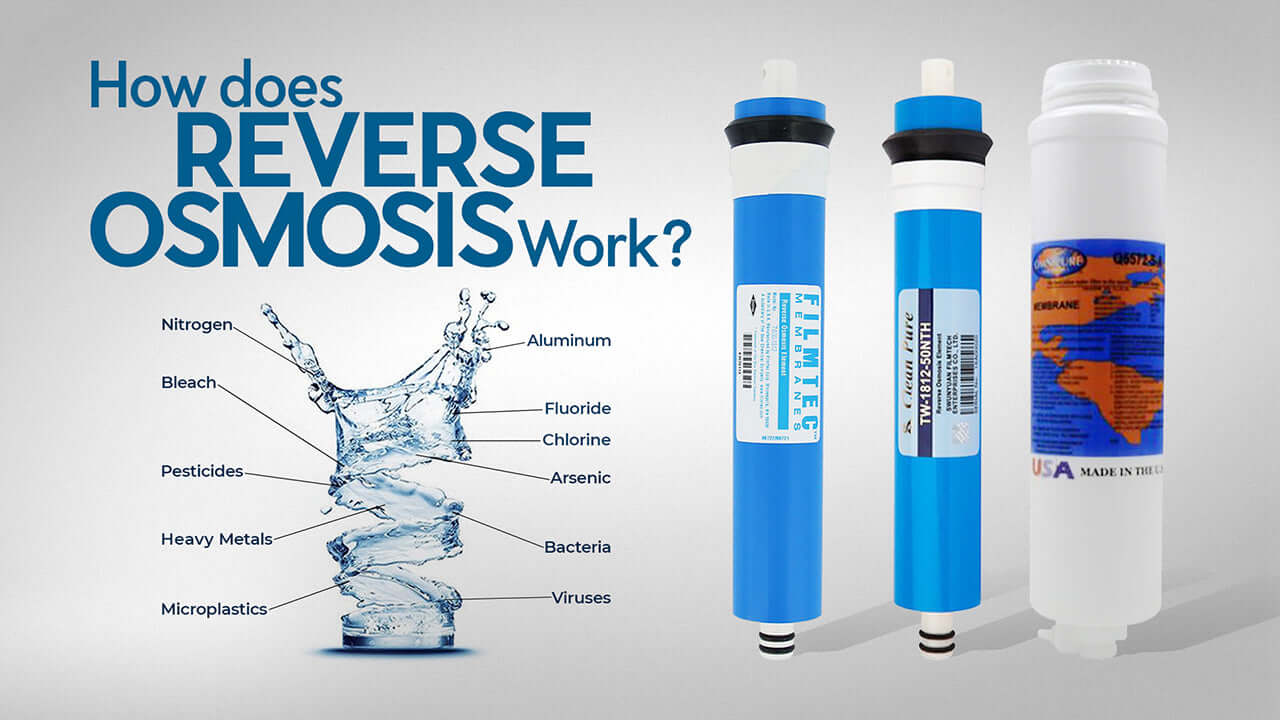How Does Reverse Osmosis Work? Well, we’re glad you asked.
Reverse Osmosis uses what is called a MEMBRANE, to split the water from its contaminants and send all the purified water into a storage container or a glass for drinking.
The membrane is semi-permeable, which means water molecules can pass through it while acting as a barrier to dissolved solids. The pores of a Reverse Osmosis Water Filter are much smaller than the pores of a general Benchtop or Under Sink Water Filter.

Pictured Above: Reverse Osmosis Membranes
Our Buyers Guide To Reverse Osmosis contains more on How Reverse Osmosis works, a detailed explanation of the stages of filtration, and a breakdown of different types of Reverse Osmosis Water Filters for various home situations.
What Contaminants Does Reverse Osmosis Remove?

Reverse Osmosis Water Filters remove THE MOST contaminants of all types of water filters:
- PFAS/PFOS 99.9%
- Fluoride 93.6%
- Lead 98.6%
- Chlorine 95%
- Copper 98.5%
- Selenium 97.9%
- Total Dissolved Solids Reduction 90.8%
- Cadmium 99.1%
- Arsenic 88.0%
- Chromium Cr 6 96.4%
- Turbidity 99.1%
- Barium 96.3%
Just to name a few.
To learn more about Reverse Osmosis, please visit our page What Is Reverse Osmosis?








